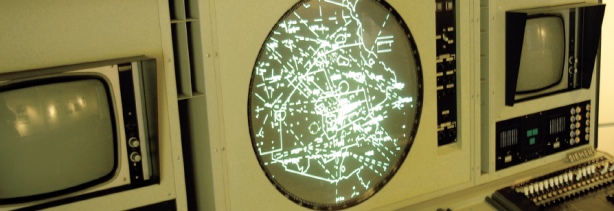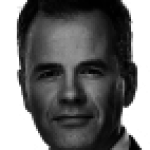In social terms, we appear to be on the verge of a new era. Old truths are no longer valid and our knowledge of new truths is only patchy. What we do know is that digital is the new norm. A society is now evolving in which clients have extreme expectations – they believe that almost everything is possible.
The question is: How can companies cope with and capitalize on these enormous dynamics and uncertainties in a structured way?
The answer: By abandoning all fear of new technology, by studying the environment much more intensively, and by giving pride of place to social value in everything they do.
Introduction
Over the years, telecom providers have seen their income from voice and SMS services decline spectacularly – thanks to WhatsApp and Skype, among others – and this is undermining their traditional business model. Yields from media and entertainment companies have been under pressure for years due to competition from alternative – subscription-based – models such as Spotify. Hotel and travel organizations are experiencing great difficulty as they become increasingly dependent upon booking sites that make smart use of data from the crowd, and demand an ever-greater part of the margins. Altogether, these are unmistakable signals that technology is now radically undercutting business models. The impact is tangible in almost every sector.
A wave of technology – varying from the rise of the Internet of Things, cloud computing and Big Data, to telerobotics and augmented reality – is inundating the world. Digital has become the new norm. Thus, the world is changing drastically, but this involves more than a technological influence. A more fundamental undercurrent present in these developments is the fact that a society is arising in which clients nurture extreme expectations, purely because almost everything is possible. Consumers assume that there is an app for everything. They expect an uptime of 100% in all their services. They expect that companies will supply the ultimate custom-made goods. They want everything to be excellent and sustainable (and preferably cheap to the point of being free). On the company side, things are no different. A new IT system should be operational within a few weeks. That was inconceivable five years ago. That is no longer the case.
New growth
This may be pretty challenging, but it does bring an abundance of new opportunities. In macro-economic terms, there is reason for optimism. We are right in the middle of a classical economic phenomenon: namely, creative destruction, as described by Joseph Schumpeter,[http://en.wikipedia.org/wiki/Creative_destruction ] the Austrian economist. This theory states that we can only come to innovation once we have dismantled the old structure. And that is what is currently happening in almost all sectors.
How can companies shape the necessary renewal and innovation? Broadly speaking, three steps are required.
- companies should not respond from fear of losing what presently works well, but should embrace new concepts instead
- companies should get as close as possible to their environment and scan it in an advanced way for expectations and trends
- in everything they do, companies should pursue a policy of combining social and commercial value creation.
1 Have no fear of new technology
Anxiety is often the worst possible counselor. Nevertheless, anxiety over losing current market position frequently plays a major role in company policy when there is an opportunity to experiment with alternative models – despite the fact that it is often better to consider what can be gained by taking risks. The telecom industry is an excellent example of this phenomenon. For years, the case for change has been extremely strong in that sector. Telecom providers have been looking for alternative business models because the lifecycle of the old models is reaching its end. If one dares to examine the situation from the other side, one can see that the data on telephone usage and on the mobility of the telecom subscriber – on the basis of GPS, among other things – can be of great value to others. Numerous experiments in that field are now being carried out.
As mentioned, the changes concern more than capitalizing on new technology. The core of the challenge is the fact that the client tends to nurture extreme expectations. Technology offers extreme potential to capitalize on these expectations, and those who wish to do so must control their anxiety about risk. In every sector, parties who make smart use of that potential suddenly appear and, in doing so, invert existing conventions. These are probably tomorrow’s winners, also because they create social value.
Take the rise of 3-D printing, for example. Potentially this will provide many real opportunities to supply the ultimate custom-made commodity, to counteract overproduction and wastage, and to bring employment closer to the consumer. It undermines a number of existing business models, but is also a marvelous opportunity for new models.
Successful anticipation of the future begins with the right basic attitude, in which management does not make decisions out of anxiety to preserve the current business model, but on the basis of a drive to do things better.
2 Up to date with trends via new methods
To keep right up to date, you need to have a truly sharp focus on the way the future is developing. Even in 2013, it remains impossible to predict the future, although Big Data concepts do provide a treasure chest of opportunities for predictive analyses. The agreeable aspect of the flood of new technology is that it brings exciting opportunities to experience the trends more intensively, with or without the clients.
A minor revolution is occurring in the way that enterprises are adapting their market position or strategy. Traditionally, enterprises have performed (market) research for this purpose, but nowadays they are increasingly opting for more direct methods in which they collaborate much more closely with groups of clients or stakeholders. An excellent example of this development is crowdsourcing, which is actually a far-reaching form of market research. For instance, the Fiat Mio is the first car to be designed on the basis of crowdsourcing. The company had the nerve to realize this model by not only relying upon the insight of its own professionals but also allowing the world to have a say in the way the car should ride, feel and look. A viral campaign led to processing no fewer than 10,000 suggestions from 160 countries in the design.
While crowdsourcing is an extreme form of market research, things can be a good bit more extreme, with new possibilities for an intelligent scan of blogs, chat rooms, social media, websites, comment boxes and other digital sources. Huge amounts of unstructured data (text, photos, video, etc.) can also be processed in this way. This field of activity is evolving rapidly and now boasts many promising start-ups. One of these is an American company called WiseWindow, which was recently acquired by KPMG. With the aid of patented web analytics systems, WiseWindow scours the internet for the (unabridged) opinions of millions of consumers and (amateur) experts about products and services, suggestions for improvements, ideas for other applications and suchlike in order to convert these into insights upon which entrepreneurs can base their (strategic) decisions. This combing process involves more than searching for keywords; it is primarily concerned with expressions of sentiment – the technology is also capable of comprehending the significance of sentences.
This is the inversion of traditional market research: no longer are people asked to articulate an opinion about something, but an intelligent scan of opinions, suggestions and ideas that are already available is carried out. This gives companies a marvelous opportunity to get closer to a wide environment of creative input and consumer intelligence.
3 A combination of commercial and social value
You must have read it before: data is the new gold in a world in which the quantity of data is growing exponentially and in which everything seems to be communicating with everything else. Those capable of capitalizing on this data in a smart way can certainly gain financial benefit from this situation. Take Facebook for instance, where people show their friends things that they like and enjoy. This is attractive to advertisers, for example, who can use this knowledge to place their advertisements more strategically and directly. But how smart is this really? The advertisers have no idea whether or not the users are telling the truth. They are simply saying that they like something, just as people declare which political party they will vote for. However, experience has taught us that the opinion polls can be seriously wide of the mark.
Action speaks louder than words. Keeping that slogan in mind, it is much more interesting when we know what people do instead of what they think. Where do they go? What do they buy? What kind of music do they listen to? Which films do they watch? Who do they call? Only when we know such things can we make specific customer-oriented offers. A number of large firms in the hi-tech industry – with Google, Apple and Samsung at the forefront – have a keen awareness of the situation. They want us to use their appliances – cameras, telephones, televisions – not (only) because they make money by selling hardware, but also – and primarily – because they can attach a sensor to us. By means of this sensor, they can obtain more insight into our behavior, which is their future raison d’être. Google has great expectations of Google Glass, and Apple has invested a great deal in Apple TV. These companies do not just do this with the aim of selling us those spectacles or that box, but rather of acquiring more information about our behavior.
With these products, they move away from the practice of using buckshot to hit a moving target; they can fire out precisely targeted offers. That is better, but what is even better is that Big Data can improve the world – and can strengthen your enterprise at the same time. According to the experts, it is not inconceivable that we will soon be capable of monitoring an outbreak of disease at a personal level, and thus give ourselves the opportunity to stop the spread of the outbreak by timely intervention. Or we may be capable of designing cities on the basis of new insights into the mobility and behavior of the citizens, so that cities can make much more efficient use of space and energy.
The real challenge to companies lies in the concept of taking Shared Value (as outlined by Harvard professor Michael Porter) from the drawing board to real-life practice. In that concept, an enterprise not only pursues operational profit but also value creation for people and the planet. Moreover, companies have scarcely any choice in this matter, as radical transparency – enabled by the internet – has given citizens more influence than ever before. Social media has not only turned out to be the ideal means to put an end to monopolistic rule, but it also makes or breaks the reputations of companies. Citizens simply demand that companies do not have a negative impact on the world and actually contribute something positive.
Numerous examples can be envisioned – some of which already exist in practice – in which this combination has been realized:
- Coupling data from a mobile provider to data from a credit card company makes it possible to block a credit card transaction if the credit card is more than 20 meters away from your telephone. The commercial benefit: lower fraud costs. Social benefit: more secure payment.
- An insurance company assigns customers small cases containing a GPS system to install in their cars. These cases monitor the driving conduct of the customers. The safer the driving style – about which direct feedback is given in the car – the lower the customer’s insurance premium. Commercial benefit: a premium more aligned with the insured risk. Social benefit: greater traffic safety.
Big Data provides countless possibilities to improve the world. This awareness has not yet been aroused – understandably – among many citizens who tend to regard Big Data primarily in terms of Big Brother-like situations in which companies are only concerned with making as much money as possible, at the citizens’ expense and with their personal data. However, you can look at a hunger for data from a different perspective: the more data you, as an individual, are willing to share with others, the more possibilities there will be to rid the world of obstructions and inefficiencies.
Companies will (have to) go for a model in which they create social value and can achieve financial benefit as a result. This is not an unrealistic assumption, but is a trend that has already been set in motion by several frontrunners. To a certain extent, this has little to do with data. With special soap products and campaigns, Unilever directs effort to poor regions in Asia, for example, to reduce child mortality as a consequence of poor hygiene. With such actions, Unilever has been allocated a license to operate in the area because it creates social value. And, of course, the demand for soap increases at the same time.
In conclusion
We are entering a new world within which we do not yet know the answers to several major issues. Moreover, we are constantly hearing critical remarks about the amount of trust we are placing in technology. For instance, the rise of Big Data is not only being followed critically by advocates of privacy but also by critical thinkers who find that we should not let ourselves be swept along on the back of technology. One of the critics is Nassim Taleb – one of the most influential thinkers of our times. According to Taleb, Big Data is nonsense.[“Coincidence more reliable than analysts,” Het Financieele Dagblad (Dutch Financial Daily), 5 October 2013.] The core of his reasoning is as follows: the more patterns you think you have discovered, the more patterns turn out to be non-recurrent pure coincidence. Taleb has a valid point here. The upsurge of more calculation capacity and the exponential growth of the quantity of data have increased the risk that we are engaging in so-called “number crunching” too enthusiastically. And this results in false conclusions, even if it is simply because we do not discern the difference between correlation and causality. Taleb illustrates this point with an example of the statistical link between the duration of a hospital admission and the patient’s astrological sign. This is, of course, a link with absolutely no value at all.
A good statistical analyst is aware of this risk, however, and is trained to minimize it. A central feature of risk analysis is the so-called “Simpson’s paradox.” This paradox is easily explained to non-statisticians by means of the example that statistics show that seamen who go overboard without life-jackets are saved by the rescue services more often than seamen who do wear life-jackets. This is contrary to all logic, but closer investigation makes it understandablw. There is a “lurking” or confounding variable not previously mentioned: seamen turn out to wear life-jackets in bad weather.
This example is typical of the world of Data Scientists. A faulty analysis can be extremely dangerous. It will not be the first time that data analysis has been used to abandon the use of life-jackets – in a figurative sense.
We must prevent such accidents. For this reason, we must not place Big Data in the number-crunching department, because that is merely the beginning. The difficulty lies primarily in being able to understand the results, perhaps leading to insights that are interesting to the client. After all, the human factor should not be underestimated.
Whatever the case, companies will have to find answers to the extreme expectations of their clients. To this end, they must embrace new technology rather than rebuff it. Companies must study the environment much more intensively than they have done in the past, and try to realize co-creation in conjunction with that environment. And they must strive toward a combination of social and financial value in everything they do.





